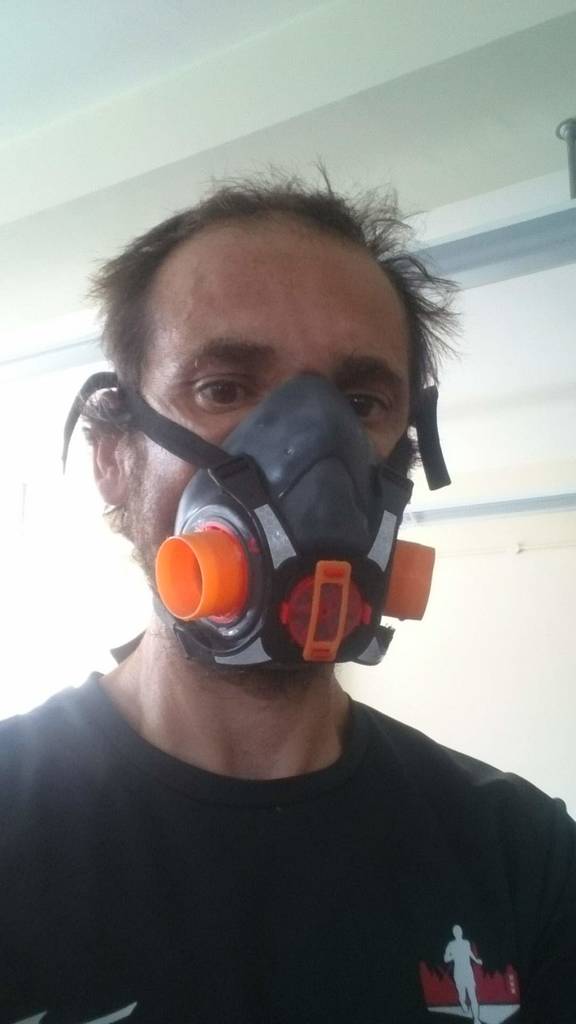
Respiratory facemask with inlet and outlet valves for physiology experiments
thingiverse
Having tried the AD Instruments facemask, which we bought at £665 including two masks and the necessary valves (https://www.adinstruments.com/products/face-masks-and-kits) we identified several inadequacies in the design. First, it is heavy (284g), so it has a tendency to slip down the face when sweating a lot. Second, the design is very uncomfortable (at least in my view) during prolonged wearing as the mouth and nose compartments are separated by a ridge which digs into my upper lip. Third, I could not get a decent seal around the nose and there is no room for a nose clip - so leaks were difficult to avoid. Finally, it is just far too expensive for what it is. So, we went back to basic principles. We needed a mask rather than an 'in-mouth' tube as running on a treadmill presents a risk of falling. We also wanted something that was more comfortable with a better seal, lighter and at a decent price. Fortunately the DIY respirator market has provided us with a solution. We chose the JSP Force 8 half mask (https://www.screwfix.com/p/jsp-force-8-half-mask-without-filters/22485) as our base mask. It is cheap (DIY stores, like Screwfix sell the basic mask for around £10) and comfortable with sufficient ports for inlet and outlet air. We blocked off the front port with silicone rubber and used the two side ports for the inlet and outlet valves with four common parts: a 3D printed tube connector which push fits into the mask (ideally sealed with silicone rubber), a flap valve made from OHP acetate sheet (laser cut), a valve support (laser cut Perspex), and a retaining ring (either laser cut Perspex or 3D printed - either works). For the outlet valve the assembly order is: valve support followed by flap valve followed by the retaining clip. For the inlet valve simply assemble with the flap valves before the valve support (so the flap valve can move inwards but not outwards). The whole assembly weighs in at 99g (just over a third of the weight of the AD Instruments mask and valves) and cost a little over £10 - which is affordable for lab projects. The resistance to air flow is fairly low - although we have not tried a full VO2max type test yet. The flap valves open and close promptly with little backflow. Testing it against the AD Instruments mask the minute volume is about 5% greater - which is probably reflective of the difficulty in getting a good seal with the AD Instruments kit. The effective dead space is fairly low as the mask volume is small, although we have not yet tried to measure it. I will need to have a shave before we do our final pressure tests on the two masks (and I will need to work out how to close the nose under the AD Insturments mask).
With this file you will be able to print Respiratory facemask with inlet and outlet valves for physiology experiments with your 3D printer. Click on the button and save the file on your computer to work, edit or customize your design. You can also find more 3D designs for printers on Respiratory facemask with inlet and outlet valves for physiology experiments.
